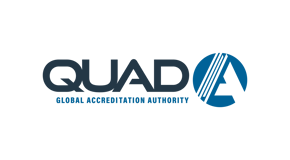The information provided in this newsletter is applicable to Ambulatory Surgical Centers (ASC), Office-based Surgery (OBS), Office-based Procedural (OBP), Oral Maxillofacial Surgery, Pediatric Dentistry, (OMS), and International Surgery & Dentist.
In the realm of workplace safety, the importance of annual safety hazard training cannot be overstated. Annual hazard safety training educates your staff on what may pose a safety or hazard risk to them or the patients of your facility. This essential practice helps to establish that facility staff are well-versed in recognizing, reporting, and managing workplace hazards. The potential for accidents, injuries, and health issues in the workplace necessitates a proactive approach to safety training, and by making such training an annual requirement, facilities can significantly mitigate risks and foster a culture of safety and well-being.
The rationale behind annual safety hazard training is clear: workplaces evolve, new hazards emerge, new products and equipment are used, and regulations are updated. This dynamic nature of work environments means that what was relevant and sufficient in terms of safety training last year may not necessarily cover the needs of the present year. Moreover, the repetition and reinforcement of safety protocols through annual training allows the information to remain fresh in staff minds, making it more likely that they will respond appropriately in the event of a hazard.
Annual safety hazard training typically encompasses a broad range of topics tailored to the specific needs and risks associated with a given workplace. This might include identifying potential hazards like chemical exposure, trip and fall risks, fire safety, ergonomic considerations to prevent musculoskeletal injuries, and even stress management to combat workplace burnout. Training must also include any facility-specific services that may pose a safety risk. For example, if a facility performs laser procedures, staff must receive training on laser safety. Additionally, training often covers the correct use of personal protective equipment (PPE), emergency response procedures, including evacuation plans, and the proper way to report hazards.
The benefits of such comprehensive training are manifold. First and foremost, it significantly reduces the likelihood of accidents and injuries, which in turn can lead to a reduction in workers' compensation claims and lost workdays. This not only has a direct impact on the bottom line by minimizing costs associated with injuries and liability but also contributes to higher staff morale and productivity. An environment that prioritizes safety is one where staff feel valued and protected, which is conducive to staff satisfaction and retention.
Moreover, adherence to annual safety training regulations can help a facility maintain compliance with local, state, and federal regulations. Non-compliance may result in deficiencies during a survey, fines, and penalties, not to mention damage to a facility's reputation. By requiring all staff to undergo annual safety hazard training, facilities demonstrate their commitment to upholding the highest standards of safety and regulatory compliance.
Implementing an effective annual safety hazard training program requires thoughtful planning and execution. This involves assessing the specific hazards associated with a particular workplace, developing or updating training materials to address these risks, and delivering the training in an engaging manner that facilitates understanding and retention. A variety of training methods can be employed, from in-person training and meetings to e-learning modules and interactive activities. The key is to make the training accessible and relevant to the types of services that are available at the facility and to provide the training to all staff regardless of their role, level of experience and employment status.
Feedback and evaluation are critical components of any training program. Following each training session, employees should have the opportunity to provide feedback on the content and delivery of the training, which can be invaluable in identifying areas for improvement. Regular assessments, both theoretical and practical, can also help gauge the effectiveness of the training and ensure that employees are able to apply what they have learned in real-world scenarios.
Annual safety hazard training is an indispensable part of maintaining a safe and healthy workplace and high-quality patient care. By systematically educating staff on how to recognize and manage workplace hazards, facilities can prevent accidents and injuries, comply with legal requirements, and foster a positive safety culture. The investment in annual training is not merely a regulatory obligation but a testament to a facility's commitment to its most valuable asset: its staff. As workplaces continue to evolve, so too will the challenges of ensuring safety; thus, annual safety hazard training will remain a cornerstone of proactive workplace safety management.
If you have any questions about annual hazard safety training or any QUAD A standard, please email them to standards@quada.org.
Since 1980, QUAD A (a non-profit, physician-founded and led global accreditation organization) has worked with thousands of healthcare facilities to standardize and improve the quality of healthcare they provide – believing that patient safety should always come first.


